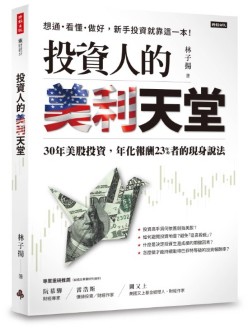FOMO
Many tech giants see the “AI boom” as a life-or-death moment for their businesses. Global companies face the threat of Trump’s tariffs, but for Silicon Valley’s tech industry, falling behind in the AI race is a more serious blow—AI investment will only increase, not decrease, because no one can afford to miss out on the Fourth Industrial Revolution.
A rare consensus
The White House, Wall Street, and Silicon Valley agree on one thing: AI technology is a top priority. Tech giants are investing billions in new data centers and infrastructure, and the White House has launched an AI initiative to enhance US leadership in this field.
Nothing can stop it
While Trump’s high tariffs may seem terrifying, it’s expected that tech giants will work more closely with the government to mitigate the potential costs of tariffs. Tech giants may also have to forgo some profits, or even share them with the US government, as evidenced by recent close negotiations between Trump and tech giants.
The Trump administration’s trade war has raised questions about whether its policies will hinder the development of AI. Tariffs could increase the cost of required raw materials and components. Experts’ reactions to this were surprising. Despite the increased uncertainty caused by tariffs, tech giants will not slow down their investment in artificial intelligence (AI).
AI is the Fourth Industrial Revolution
We have only scratched the surface of the Fourth Industrial Revolution, which is currently unfolding globally, led by tech giants such as Nvidia, Microsoft, Palantir, Meta, Alphabet, and Amazon.
Note: The term “Fourth Industrial Revolution” (4IR) was popularized by Klaus Schwab, founder and executive chairman of the World Economic Forum (WEF). In his 2016 book, “The Fourth Industrial Revolution,” Schwab argued that following the steam engine (the First Industrial Revolution), electricity/mass production (the Second Industrial Revolution), and computing/automation (the Third Industrial Revolution), digital technologies (AI, robotics, the Internet of Things, biotechnology, nanotechnology, quantum computing, etc.) are ushering in a new industrial era.
No one can afford the consequences
The risks of falling behind in the global AI race are simply too high. If you have the money, and you’re told this is a life-or-death business, cost isn’t the most important factor to consider.
When Meta, Microsoft, and Google reported earnings in late July, the message was clear: tech giants are investing heavily in AI and starting to reap the rewards—which is why corporate AI investment is only going to increase, not decrease.
The dilemma
Due to strong market demand, the impact of tariffs on tech giants is manageable. However, this is not the case for small and medium-sized enterprises (SMEs). These companies often face shareholder pressure for a quick return on investment, but AI technology and data centers are long-term investments that may take years to realize value, putting SMEs at a disadvantage.

Related articles
- “Tech giants’ AI strategy are shifting“
- “AI jeopardizes cash flow and profits“
- “AI job openings tripled in past five years“
- “AI investment will only increase because no one can afford to miss out on the Fourth Industrial Revolution“
- “Some AI software vendors are starting to make money“
- “How Much Does Generative AI Cost?“
- “Major artificial intelligence companies in US stocks market“
- “Artificial intelligence investment trap“
- “The artificial intelligence bubble in the capital market is forming“
- “OpenAI, the Generative Artificial Intelligence rising star and ChatGPT“
- “The Importance of Small Language Models (SLM) in AI, how is Apple AI different from others?“
- “Artificial intelligence benefits industries“
- “Four chip companies account for one-third of S&P 500 gains so far this year"
- “Top five lucrative artificial lucrative intelligence listed companies“
- “DeepSeek routed the global AI and stock“
- “Chinese AI progress and top companies“
- “AI Agent will be the next wave of software industry“
- “Geoffrey Hinton, 2024 Nobel Physics winner, inadvertently helped Nvida transform to AI overlord“
- “2024 Nobel Chemistry Prize awarded to 3 AI experts, accurately predict the 3D structure of proteins“
- “Why software underperforming amid the AI craze?“
Disclaimer
- The content of this site is the author’s personal opinions and is for reference only. I am not responsible for the correctness, opinions, and immediacy of the content and information of the article. Readers must make their own judgments.
- I shall not be liable for any damages or other legal liabilities for the direct or indirect losses caused by the readers’ direct or indirect reliance on and reference to the information on this site, or all the responsibilities arising therefrom, as a result of any investment behavior.
